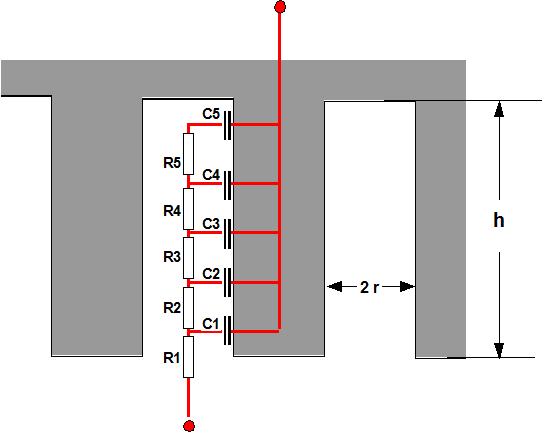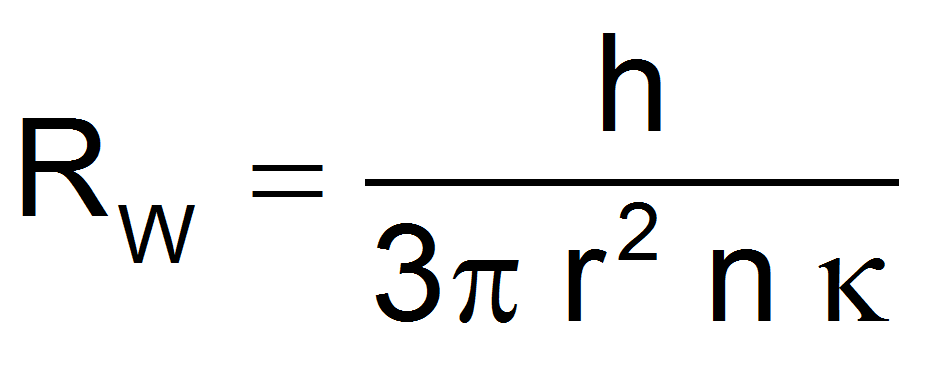
|
|
back
MENU
|
|
Private
|

Frequency
Capacitance and ESR as a function of the frequency


Fig. 1 and 2 show the frequency spectra of 2600 F, 0.5 mOhm BCAP0010 supercapacitor capacitance and series resistance for 3 different polarization voltages.
The supercapacitor capacitance increases with the applied voltage. The reasons are presented in the voltage properties section.
The capacitance and the series resistance drop with the frequency because the ions don't have the time to access all the part of the carbon surface. The surface which in is deep in the pores, which needs a longer ion travel distance, or in other words which is ionicaly more resitive, is not seen by the ions. The smaller the ions are and the less vicous is the electrolyte, the better it is for the "high" frequency response of the capacitor.
The ionic impedance behavior as a function of the frequency is described by the de Levie model[i].

2r is the pore diameter and h is the pore depth. The pore is filled with electrolyte. The carbon walls are sketched in grey. R1 to R5 are 5 contributions to the ionic resistance. The impedance is given by:
 where
where

[i] de Levie R. Advances in Electrochemistry and Electrochemical Engineering 1967;6:329-97.
Source: Garmanage: Roland Gallay